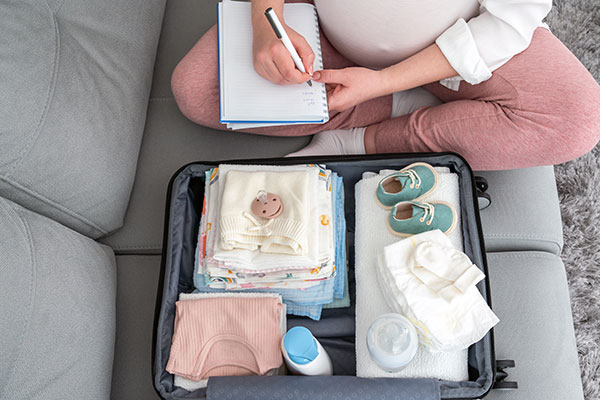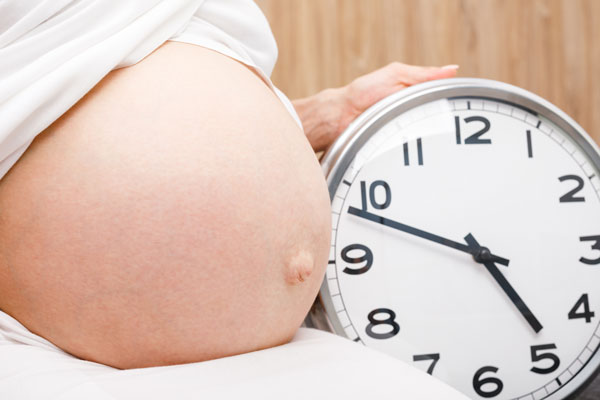Picture this: It’s 2 AM, contractions are five minutes apart, and your partner is frantically asking, “Where’s the hospital bag?!” Meanwhile, you’re trying to remember if you packed those super comfortable slippers or if they’re still sitting by your bedside.
Category: Labor and Delivery
Debunking the Top 5 Myths About Childbirth: What Every Expectant Mother Should Know
Pregnancy and childbirth are among life’s most transformative experiences, yet they’re also surrounded by countless myths and misconceptions that can create unnecessary anxiety for expectant mothers in Cumming and throughout North Georgia.
Regaining Bladder Control After Childbirth
Childbirth is an extraordinary experience, but it can sometimes lead to unexpected changes in your body, such as difficulty controlling your bladder. This is a common issue for many new mothers, and it’s often due to the physical changes that occur during pregnancy and delivery.
FAQs About Vaginal Birth After Cesarean (VBAC)
If you’ve previously had a cesarean section (C-section) but are now considering a vaginal birth for your next pregnancy, you may have questions about what’s known as Vaginal Birth After Cesarean (VBAC). VBAC can be a safe and viable option for many women, but it’s important to understand the risks, benefits, and how the process works.
Midwife Frequently Asked Questions
At North Pointe OB/GYN in Cumming, we understand that choosing the right care provider for your pregnancy and childbirth is a significant decision. Midwives play a crucial role in providing personalized, compassionate care throughout the pregnancy journey. To help you understand the role of midwives and what they offer, we’ve compiled this comprehensive FAQ guide.
Anticipating Arrival: 5 Signs That Labor Is Near
The final weeks of pregnancy are filled with anticipation and excitement, as expectant mothers and their families eagerly await the arrival of their new addition. Knowing the signs that labor is near can help you feel more prepared for the big day. At North Pointe OB/GYN in Cumming, we are committed to guiding and supporting our patients through every step of their pregnancy journey, including the final stages leading up to labor. Here are five signs that suggest labor might be just around the corner.
1. Lightening
One of the first signs that labor is approaching is known as “lightening.” This occurs when the baby drops lower into the pelvis, getting into position for birth. Lightening can happen a few weeks or just a few hours before labor begins. It can lead to increased pelvic pressure and more frequent urination, as the baby’s head puts pressure on your bladder. While it might make moving around a bit more challenging, many women find they can breathe a little easier after lightening occurs because there’s less pressure on the diaphragm.
2. Increased Braxton Hicks Contractions
Braxton Hicks contractions are often referred to as “practice contractions” and can occur throughout your pregnancy. However, as you approach labor, these contractions may become more frequent and intense. Unlike true labor contractions, Braxton Hicks are usually irregular, don’t get closer together over time, and can often be relieved by changing positions or moving around. If your contractions begin to form a regular pattern and continue to increase in strength, it’s a sign that you’re moving closer to actual labor.
3. Nesting Instinct
Many women experience a burst of energy and the urge to prepare their home for the baby’s arrival, known as the nesting instinct. This can include organizing the nursery, cleaning the house, or cooking meals to freeze for after the baby’s born. While the nesting instinct can vary in intensity and can occur at different times in your pregnancy, a sudden urge to nest close to your due date can be a sign that labor is approaching.
4. Changes in Vaginal Discharge
As your body prepares for labor, you may notice an increase in vaginal discharge that is clear, pink, or slightly bloody. This is called the “bloody show” and happens when the mucus plug that has sealed the cervix during pregnancy dislodges. The loss of the mucus plug can occur days before labor starts or at the onset of labor. An increase in vaginal discharge or a noticeable “bloody show” can be an indicator that labor is imminent.
5. Water Breaking
Perhaps the most well-known sign of labor is the breaking of your water, or the rupture of the amniotic sac. While it’s a definitive sign that labor has begun or will soon, it’s worth noting that only about 15% of women experience their water breaking before labor starts. If your water breaks, it can feel like a sudden gush or a steady trickle of fluid. This is the time to contact your healthcare provider and head to the hospital, as labor could be close or already underway.
Preparing for Labor
Recognizing these signs of labor approaching can help you feel more prepared for the birth of your baby. At North Pointe OB/GYN in Cumming, we encourage expectant mothers to familiarize themselves with these signs and to discuss any questions or concerns they may have during their prenatal visits. Our team is dedicated to providing the support and care you need as you embark on the incredible journey of childbirth. Remember, every pregnancy and labor experience is unique, so it’s important to stay in close communication with your healthcare provider as your due date approaches.
Addressing Common Concerns About Labor and Delivery
Labor and delivery is a momentous event in a woman’s life, filled with anticipation, excitement, and often, many questions. At North Pointe OB/GYN in Cumming, we understand that knowledge is power, especially when it comes to childbirth. In this blog, we address some of the most common concerns and FAQs surrounding labor and delivery to help expectant mothers feel more informed and at ease as they approach this incredible journey.
FAQs about Labor and Delivery
1. When Should I Go to the Hospital?
This is one of the most frequent questions expectant mothers have. Generally, it’s recommended to go to the hospital when contractions are about five minutes apart, lasting for one minute, and have been that way for about an hour. However, every pregnancy is unique. If your water breaks, if you experience significant vaginal bleeding, or if you feel something isn’t right, you should go to the hospital immediately.
2. How Long Will My Labor Last?
The duration of labor varies widely among women. For first-time mothers, labor often lasts 12 to 24 hours, but it can be significantly shorter or longer. Subsequent deliveries usually have shorter labor periods. Our team at North Pointe OB/GYN will monitor your progress and provide guidance throughout your labor.
3. What Pain Relief Options are Available?
Pain management during labor includes various options, from natural methods like breathing exercises and birthing balls to medical interventions such as epidurals and pain medications. The choice depends on your pain tolerance, medical history, and personal preferences. We work closely with you to create a birth plan that respects your wishes and ensures a safe delivery.
4. Can I Have a Vaginal Birth if I Had a C-Section Before?
Many women are able to have a vaginal birth after a cesarean (VBAC). However, it depends on the reason for the previous C-section, the type of incision made, and other individual factors. Our doctors at North Pointe OB/GYN will evaluate your specific situation and discuss the safest option for you and your baby.
5. What are the Signs of Labor?
Signs of labor can include contractions that become more consistent and intense, lower back pain, breaking of the water (rupture of membranes), and a bloody or mucus-like vaginal discharge. If you notice any of these signs, it’s important to contact your healthcare provider.
6. What Should I Bring to the Hospital?
Prepare a hospital bag ahead of time with essentials such as a birth plan, insurance information, comfortable clothes, toiletries, and items for your baby (like a going-home outfit). North Pointe OB/GYN provides a comprehensive checklist to help you pack everything you need.
7. What if I Need a Cesarean Section?
Cesarean sections are performed when vaginal delivery could pose a risk to the mother or baby. At North Pointe OB/GYN, we have state-of-the-art facilities and experienced staff to ensure a safe and comfortable experience, should a C-section be necessary.
Trust Our Experienced Labor and Delivery Team in Cumming
At North Pointe OB/GYN in Cumming, we are committed to providing compassionate, comprehensive care to expectant mothers. Understanding common concerns about labor and delivery can help alleviate anxiety and prepare you for the birth of your child. For more personalized information or to discuss your birth plan, please reach out to us.
Time to Pack Your Bags?
While you may not be packing for a fun vacation, packing your bag for your hospital delivery is still an exciting task for most pregnant women. It is a sign that you’ll meet your baby very soon. While packing your hospital bags shouldn’t be a major or taxing chore, it shouldn’t be left to the last minute. To keep it stress-free and fun, it is best to have your hospital bag ready to go by 36 weeks of pregnancy – just in case you go into labor early.
What to Plan For
There is nothing in your hospital bag that you absolutely NEED or must have to birth your baby. The doctor only needs you. However, bringing the right items from home can make your labor and delivery and overall hospital stay much more enjoyable. There may be some uncomfortable moments as well as long periods of waiting to plan for.
In general, we recommend that you plan for a hospital day of 2 to 3 days. Bring more than a purse but don’t haul your large suitcase. A simple weekend travel bag is ideal. You are not bringing everything; Instead, choose just the important items that can make you (and your baby’s) stay more pleasant.
A Checklist for Your Hospital Bag
At North Pointe OB/GYN, we want you to feel prepared and ready for labor – one of the most exciting moments of your life. Here are some helpful suggestions for what to pack in your hospital bag:
- Personal Toiletries – toothbrush/toothpaste, face wash, body lotion.
- Pads –about 5 super-absorbent sanitary pads.
- Comfortable Clothing – 2-3 loose-fitting outfits (don’t assume you’ll be in your pre-pregnancy pants yet!)
- Maternity/Nursing Bra and Extra Underwear
- Nightgown/PJs – front-opening if you plan to breastfeed
- Entertainment –books, electronic items, puzzles, magazines
- Comfort Items – socks, cozy bathrobe, slippers, your favorite pillow
- Snacks –non-perishable food like crackers, dried fruit or granola bars.
- Baby Items and Clothes – “going home” outfit for baby and blanket/pacifier
- Miscellaneous – spare charger, contact lens/glasses
It’s really never too early to pack your hospital bag. In fact, some women find that it helps them relax during the final weeks of pregnancy to know that things are “ready to go” at a moment’s notice. After all, we typically can’t predict the hour or day that your baby will decide to make its entrance! For more tip on preparing for your labor and delivery, please call our trusted team at North Pointe OB/GYN in Cumming.
Labor Induction: Evaluating Risk and Necessity
The end of pregnancy can be tough. Not only are you ready to meet your baby, but you may also be getting very physically uncomfortable as the third trimester nears its end. Whether it is out of discomfort, excitement or scheduling convenience, many pregnant moms want to know their options for inducing labor. Labor induction involves a scheduled medical intervention to induce or provoke labor earlier than the full 40-week term of a pregnancy. The rate of induction of labor in the U.S. has risen from 9.6% in 1990 to 25.7% in 2018, including 31.7% of first-time births.
Inducing labor, however, should not be a flippant or casual decision. Labor induction comes with notable risks that must be clearly understood – especially if it is performed without medical cause.
The Danger of Elective Labor Induction
Labor induction involves interventional therapy to stimulate uterine contractions and promote labor before the body naturally does so on its own. This can be achieved with pharmaceutical medicines that ripen the cervix and typically involves a physician breaking the water sac. While labor induction can be done safely and successfully, it does not come without risks. A baby needs the full 40-week term of pregnancy to fully develop, especially in terms of the lungs and mental development.
Elective labor induction, or inducing without medical cause, poses the following risks to both mother and baby:
- Increased risk of NICU admittance
- Higher chance of prematurity
- Higher chance of jaundice
- Low heart rate
- Umbilical cord complications
- Increased risk for a C-section birth
- Uterine rupture
- Bleeding after delivery
- Infection risk for mother and baby
When is Labor Induction Necessary?
There is a time and reason for labor induction. In fact, there are medical situations in which inducing the labor prior to 40 weeks offers more benefits than risks. The following are situations in which there is medical necessity for labor induction:
- Decreased fetal movement
- High blood pressure (preeclampsia)
- Hypertension gestational diabetes
- Fetal growth restriction
- Placental abruption
- Broken water bag while not being in labor
- Beyond 41+ weeks of pregnancy (post-date induction)
At North Point OB/GYN, our providers put the health and safety of you and your baby as our highest priority. When it comes to schedule labor and delivery, we use our expansive knowledge and expertise in obstetrics to make the best decision for the timing of delivery. If intervening with labor induction is necessary, you can trust us to perform this step with unrivaled care. Call today to learn more about whether labor induction is right for you.











